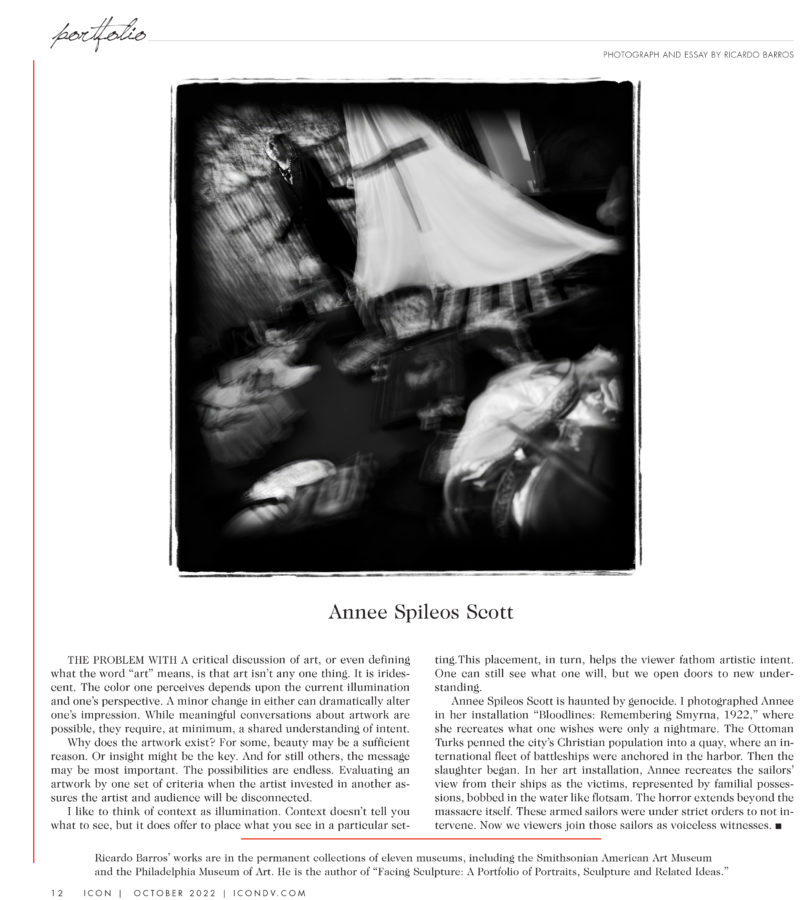Annee Spileos Scott
The problem with a critical discussion of art, or even defining what the word “art” means, is that art isn’t any one thing. It is iridescent. The color one perceives depends upon the current illumination and one’s perspective. A minor change in either can dramatically alter one’s impression. While meaningful conversations about artwork are possible, they require, at minimum, a shared understanding of intent.
Why does the artwork exist? For some, beauty may be a sufficient reason. Or insight might be the key. And for still others, the message may be most important. The possibilities are endless. Evaluating an artwork by one set of criteria when the artist invested in another assures the artist and audience will be disconnected.
I like to think of context as illumination. Context doesn’t tell you what to see, but it does offer to place what you see in a particular setting. This placement, in turn, helps the viewer fathom artistic intent. One can still see what one will, but we open doors to new understanding.
Annee Spileos Scott is haunted by genocide. I photographed Annee in her installation “Bloodlines: Remembering Smyrna, 1922,” where she recreates what one wishes were only a nightmare. The Ottoman Turks penned the city’s Christian population into a quay, where an international fleet of battleships anchored in the harbor. Then the slaughter began. In her art installation, Annee recreates the sailors’ view from their ships as the victims, represented by familial possessions, bobbed in the water like flotsam. The horror extends beyond the massacre itself. These armed sailors were under strict orders to not intervene. Now we viewers join those sailors as voiceless witnesses.

